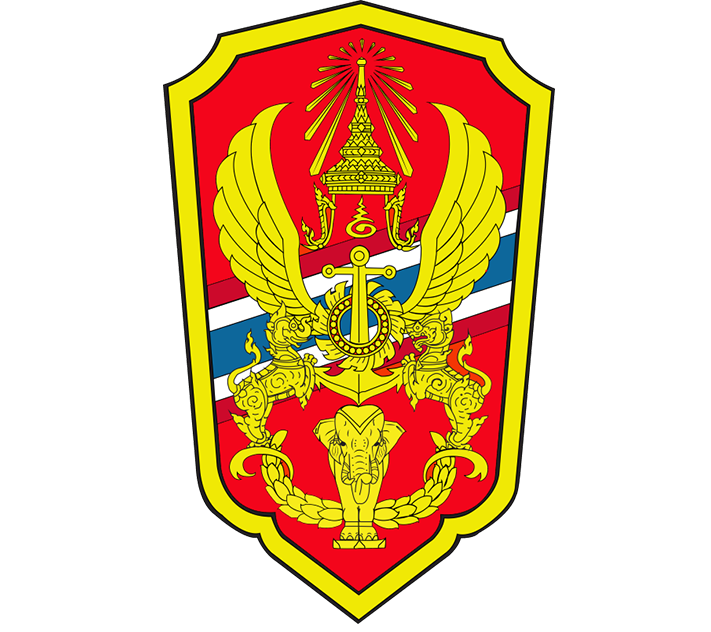เรื่อง: เยาวชนต้นแบบลดมลพิษ PM 2.5 ในพื้นที่ชลประทาน กรณีศึกษา โครงการส่งน้ำและบำรุงรักษามูลบน จังหวัดนครราชสีมา
|
|
หมวดหมู่:
|
งานวิชาการ
|
มิติ:
|
มิติสังคม/สังคมจิตวิทยา/Social-Psychology
|
พื้นที่/ขอบเขต:
|
ภายในประเทศ/Domestic/Local
|
ผู้เขียน:
|
คณะผู้เข้ารับการฝึกอบรม หลักสูตรจิตวิทยาความมั่นคง รุ่นที่ ๑๒๔ กลุ่มที่ ๑
|
หน่วยงานเจ้าของ:
|
สถาบันจิตวิทยาความมั่นคง
|
ปีที่พิมพ์:
|
2567
|
จำนวนหน้า:
|
112
|
การเปิดเผยข้อมูล:
|
สาธารณะ
|
|
บทคัดย่อ:
บทคัดย่อ
เรื่อง
เยาวชนต้นแบบลดมลพิษ PM 2.5 ในพื้นที่ชลประทาน กรณีศึกษา โครงการส่งน้ำ และบำรุงรักษามูลบน จังหวัดนครราชสีมา
ผู้
ศึกษา คณะผู้เข้ารับการฝึกอบรม หลักสูตรจิตวิทยาความมั่นคง รุ่นที่ ๑๒๔ กลุ่มที่ ๑
วัตถุประสงค์ของการศึกษาเพื่อ ๑) สร้างการตระหนักรู้แก่เยาวชนต้นแบบให้มีส่วนร่วม ในการลดมลพิษ PM 2.5 ๒) ส่งเสริมให้เกิดการเปลี่ยนแปลงทางความคิด ทัศนคติ และพฤติกรรมของ เยาวชนต่อการอนุรักษ์สิ่งแวดล้อมในพื้นที่โครงการส่งน้ำและบำรุงรักษามูลบน จังหวัดนครราชสีมา ๓) ส่งต่อข้อเสนอแนะและแนวทางในการสร้างเยาวชนต้นแบบลดมลพิษ PM 2.5 เพื่อขยายผล ไปยังกลุ่มเยาวชนรุ่นต่อไป ใช้ระเบียบวิธีการวิจัยเชิงปฏิบัติการ ผสานวิธีโดยใช้วิธีการเชิงคุณภาพ เพื่อเก็บรวบรวมข้อมูลด้วยวิธีการเชิงปริมาณ พื้นที่ศึกษา โครงการส่งน้ำและบำรุงรักษามูลบน จังหวัดนครราชสีมา กลุ่มผู้ให้ข้อมูลสำคัญ มีรูปแบบเฉพาะเจาะจงเพื่อสัมภาษณ์เชิงลึก 5 คน ได้แก่ ผู้นำชุมชนและครู และการสนทนากลุ่ม ได้แก่เยาวชนในพื้นที่ ฯ จำนวน ๔๐ คนและกลุ่มเยาวชน ต้นแบบจำนวน ๑๗ คน เครื่องมือที่ใช้แบบสอบถามแบบปลายเปิด การจัดโครงการฝึกอบรม ค่ายเยาวชนต้นแบบลดมลพิษ PM 2.5 และแบบประเมินความพึงพอใจ สถิติ คือ ความถี่ ร้อยละ และ ค่าเฉลี่ย
ผลการศึกษาพบว่า ๑) ชุมชนมีการรับรู้และตระหนักเรื่องปัญหาสิ่งแวดล้อมรวมถึงเข้าใจ ปัญหามลพิษ PM 2.5 กลุ่มเยาวชนมีการเข้าร่วมกิจกรรมด้านสิ่งแวดล้อมและมีความรู้ความเข้าใจ เกี่ยวกับผลกระทบของการเผาซังข้าวน้อย หลังจากการจัดโครงการฝึกอบรมค่ายเยาวชนต้นแบบ ลดมลพิษ PM 2.5 กลุ่มเยาวชนต้นแบบมีความตระหนักเรื่องปัญหาสิ่งแวดล้อมในพื้นที่ มีความรู้ ความเข้าใจเกี่ยวกับฝุ่น PM 2.5 และมีความรู้เกี่ยวกับวิธีกำจัดซังข้าวโดยไม่ต้องเผามากยิ่งขึ้น ๒) ชุมชนมีส่วนร่วมในการแก้ไขปัญหามลพิษ PM 2.5 ในพื้นที่ มีการประชาสัมพันธ์งดการเผาผ่าน เว็บไซต์ เฟสบุ๊ค เสียงตามสาย มีความร่วมมือในการรณรงค์จากหน่วยงานราชการและ โรงงานอุตสาหกรรม หลังจากการจัดโครงการฝึกอบรมค่ายเยาวชนต้นแบบลดมลพิษ PM 2.5 กลุ่มเยาวชนต้นแบบลดพฤติกรรมที่ทำลายสิ่งแวดล้อมหรือเพิ่มมลพิษ PM 2.5 มากยิ่งขึ้น ๓) กลุ่มเยาวชนมีความต้องการรณรงค์ให้คนในชุมชนงดการเผาโดยใช้ศักยภาพด้านการใช้สื่อสังคม ออนไลน์แอปพลิเคชัน Tiktok เพื่อเผยแพร่ผ่านช่องทางสื่อของชุมชน หลังจากการจัดโครงการฝึกอบรม ค่ายเยาวชนต้นแบบลดมลพิษ PM 2.5 กลุ่มเยาวชนต้นแบบมีความรู้เกี่ยวกับการผลิตสื่อ Tiktok เพื่อการรณรงค์ให้ชุมชนลดการเผา เพื่อลดมลพิษ PM 2.5 ได้อย่างมีประสิทธิภาพมากยิ่งขึ้น มีความพร้อมที่จะเป็นผู้รณรงค์สร้างเครือข่ายในชุมชนและส่งต่อไปยังกลุ่มเยาวชนรุ่นต่อไป ข้อเสนอแนะในการนำผลการศึกษาไปใช้ ๑) การส่งต่อข้อและแนวทางในการสร้างเยาวชนต้นแบบ ลดมลพิษ PM 2.5 เพื่อขยายผลไปยังกลุ่มเยาวชนรุ่นต่อไปในช่องทางเช่น Tiktok อินสตาแกรม (Instagram) ๒) ผู้นำชุมชนควรสร้างเครือข่ายหรือกลุ่มจิตอาสาในกลุ่มเยาวชนเพื่อส่งต่อความตระหนักรู้เกี่ยวกับปัญหาสิ่งแวดล้อมในชุมชน ผ่านเครือข่ายสังคมออนไลน์ ๓) สถานศึกษา ควรจัดกิจกรรมอนุรักษ์สิ่งแวดล้อม ผ่านกระบวนการเรียนรู้เชิงรุก เพื่อให้กลุ่มเยาวชนมีส่วนร่วมและ มีเวทีในการแสดงศักยภาพ และรับรองผลงานของเยาวชนในการยื่นเข้าศึกษาต่อในระดับอุดมศึกษาได้
(Portfolio) ๔) หน่วยงานทั้งภาครัฐและภาคเอกชนในชุมชน ควรมีส่วนร่วมในการสนับสนุนกลุ่ม เยาวชนโดยจัดโครงการประกวดหรือกิจกรรมจิตอาสาเกี่ยวกับปัญหาสิ่งแวดล้อมในชุมชน
abstract:
Abstract
Title The youth role models to reduce the PM 2.5 pollutions in the irigation area of the Munbon operation and maintenance project in Nakhon Ratchasima province.
Name Students of the Security Psychology Program, Class 124, Group 1
The objectives of the case study are; 1) To create an awareness and participation for the youth role models to reducing the PM 2.5 pollutions, 2) To promote and changes thinking, attitudes, and behaviors of the youth role models towards environmental conservation in the Munbon operation and maintenance project in Nakhon Ratchasima province, 3) To forward the suggestions and guidelines for creating the youth role models to reduce the PM 2.5 pollutions and to expand the results to the next generation The methodology used was the action research combined with the qualitative research and collect the data by using the quantitative research. The study is in the irrigation area of the Munbon operation and maintenance project in Nakhon Ratchasima province. The key of informants had a specific format for in-depth interviews with 6 (six) people the community leaders, teachers, and the group discussions (interviewing and focus group) with 40 (forty) youths in the irrigation area and 17 (seventeen) of the youth role models. The tools were open-ended questionnaires, the youth role models to reduce PM 2.5 pollutions camp, and satisfaction statistics survey are frequency, percentage, and statistical average (mean).
The results of the study are; 1) Firstly, the community and the youth group are lacked of awareness, less knowledge, and misunderstanding in the environmental problems, the problem of the PM 2.5 pollutions, and the impact of burning the rice stubble. After the youth role models to reduce PM 2.5 pollutions camp activities, the youth role models group was more aware to the environmental problems in the area, more understanding of PM 2.5 dust cause, and known how to get rid the rice stubble without burning. 2) The community involved in solving the PM 2.5 pollution problems in the area. There used of public relations to stop burning through the websites, facebook, and community announcements. There was cooperation in the campaign from government agencies and industrial plants. After the end of the role model youth camp activities, the youth role models group are reduced the behaviors that destroyed the environment or increased the PM 2.5 pollutions. 3) The youth role models group wanted to campaign for people in the community to stop burning by using the power of the social media and the tiktok application to disseminate through the community media channels. After the end of the role model youth camp, the youth role models group had knowledge about producing the Tiktok media to campaign for the communities to reduce burning and to reduce the PM 2.5 pollutions more effectively. They are ready to be a campaigner to build up the networks in to the community and pass it on to the next generation. Suggestions for applying the results; 1) Forwarding suggestions and guidelines the current youth role models group to creating the next generation of the youth role models to reduce the PM 2.5 pollutions youth via the Instagram. 2) The community leader should have to set-up the youth networks or volunteer youth groups to pass on the awareness of environmental issues in the community via social media. 3) The School should organize the environmental conservation activities through the active learning process to allow the youth group to participate and have a stage to showcase of their potential and certify the youth's work for further study (Portfolio). 4) The government and the private agencies in the community should participate to supporting the youth group by organizing the competitions or volunteer activities on environmental issues in the community.


